Evaluating Supply Chain Management Practices in Indian Construction
VerifiedAdded on 2023/06/07
|6
|1087
|190
Case Study
AI Summary
This case study investigates the adoption and challenges of supply chain management (SCM) practices within the Indian construction industry, drawing comparisons with a seamless project supply chain management model. It begins with a literature review of SCM, followed by the research framework, objectives, and methodology, then presents the findings, analysis, conclusion, and scope for future research. The research focuses on identifying gaps in the supply chain among manufacturers, contractors, subcontractors, and service providers, which can lead to inefficiencies. A case study approach was employed, examining four flyover projects in Mumbai, India, through interviews with 50 respondents. The findings reveal a lack of involvement of all stakeholders at the project design stage, limited partnering in the supply chain, and a general lack of knowledge of SCM principles among construction project agents. The study concludes that integrating strategic need and value management studies is crucial for improving efficiency and transparency in the construction sector and suggests future research should encompass both private and public sector projects to provide a more comprehensive understanding of SCM implementation.
1 out of 6
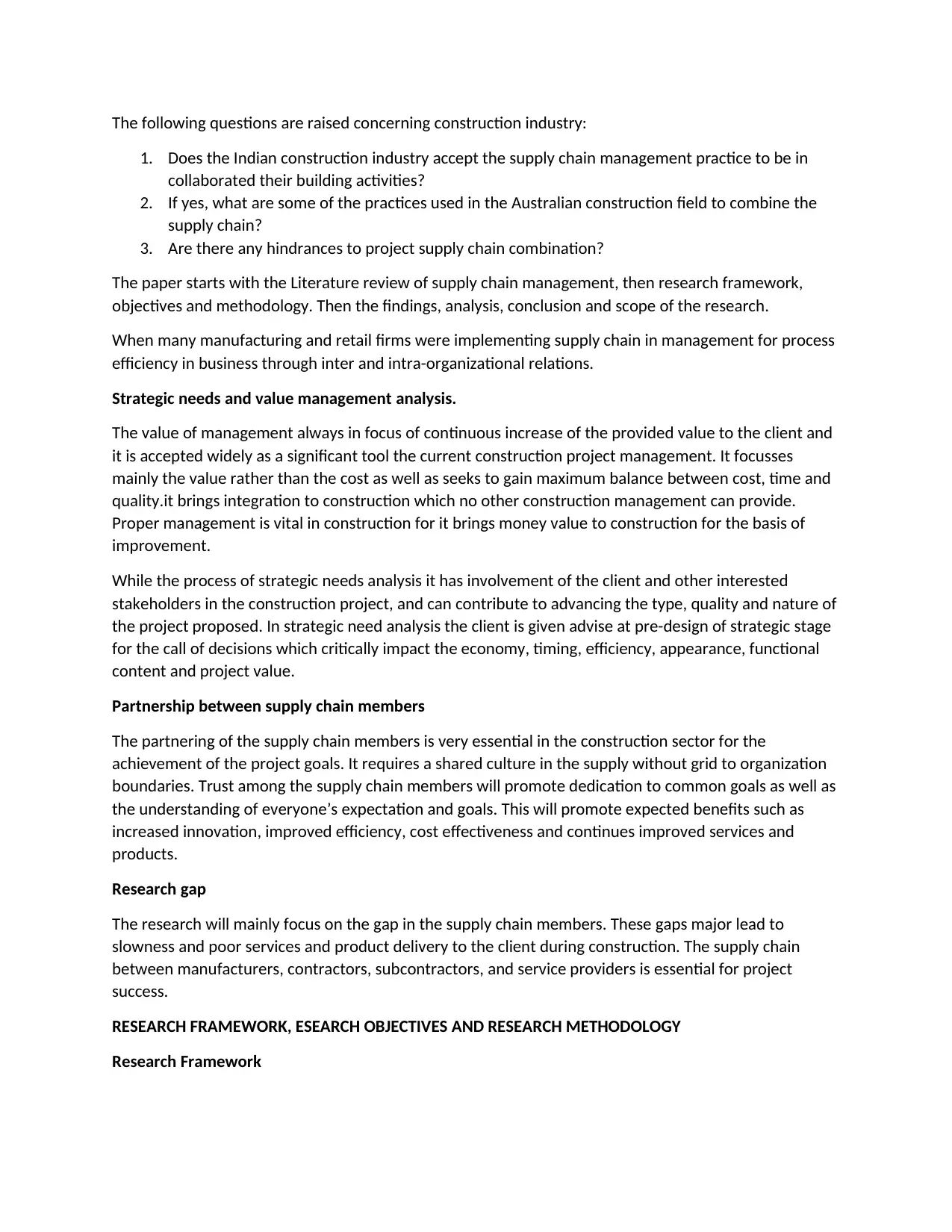

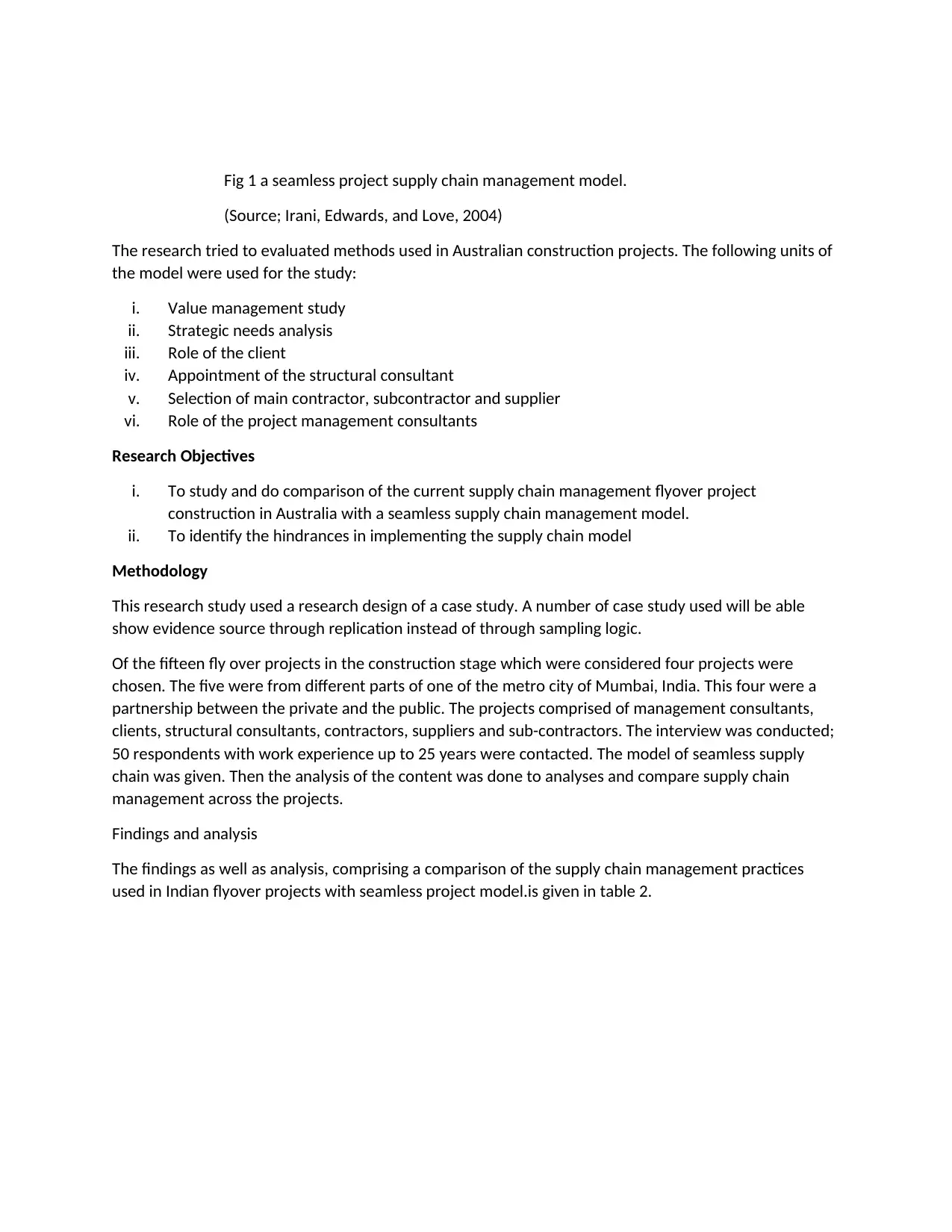

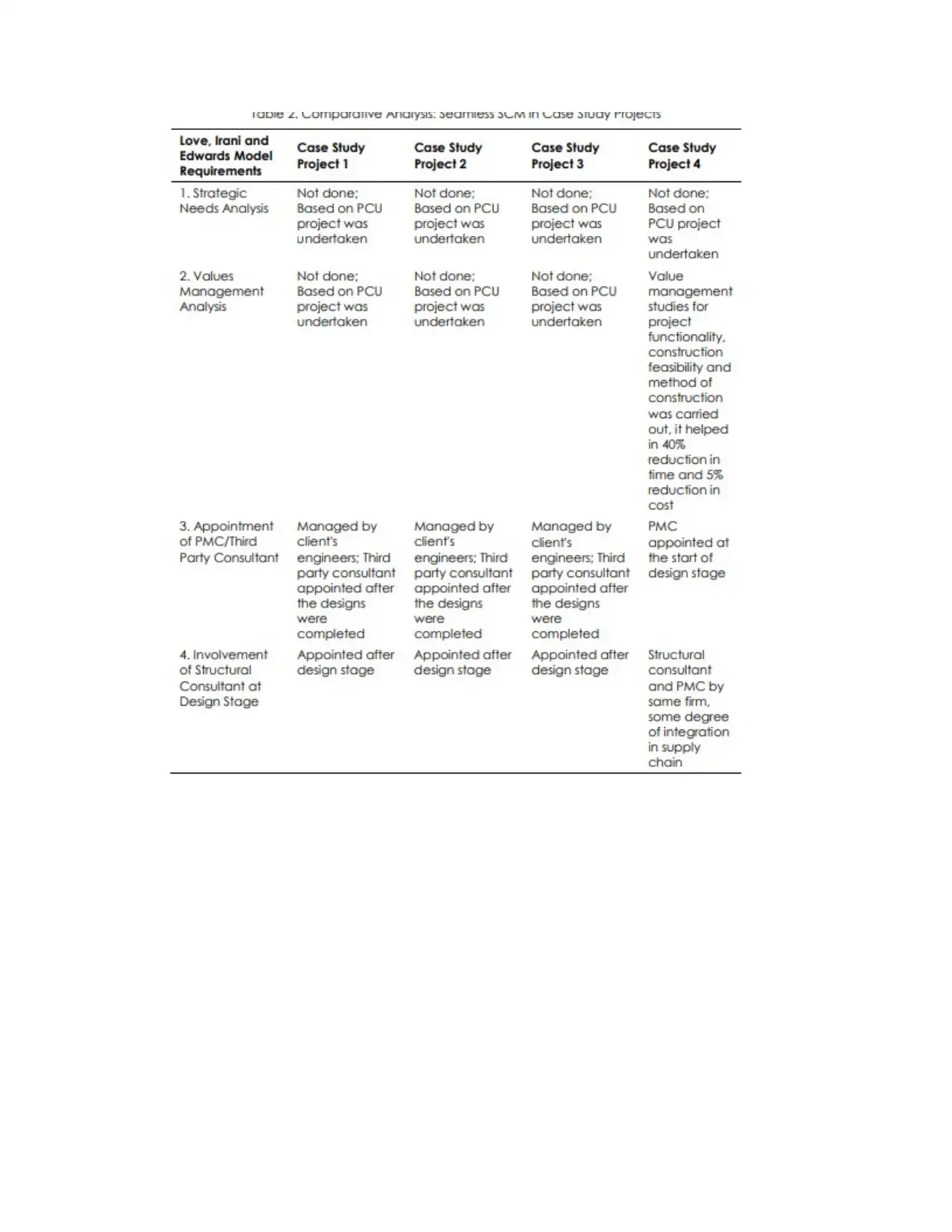
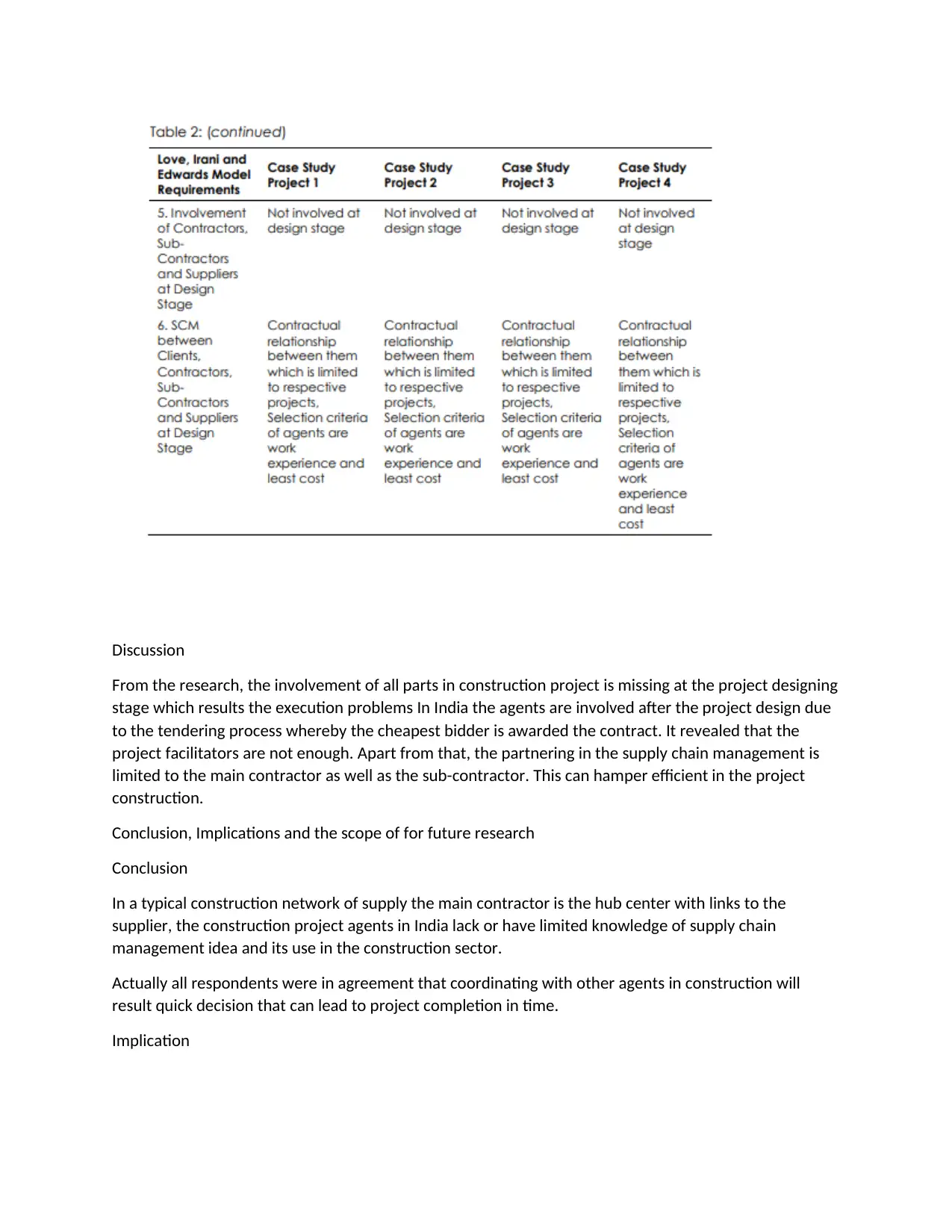
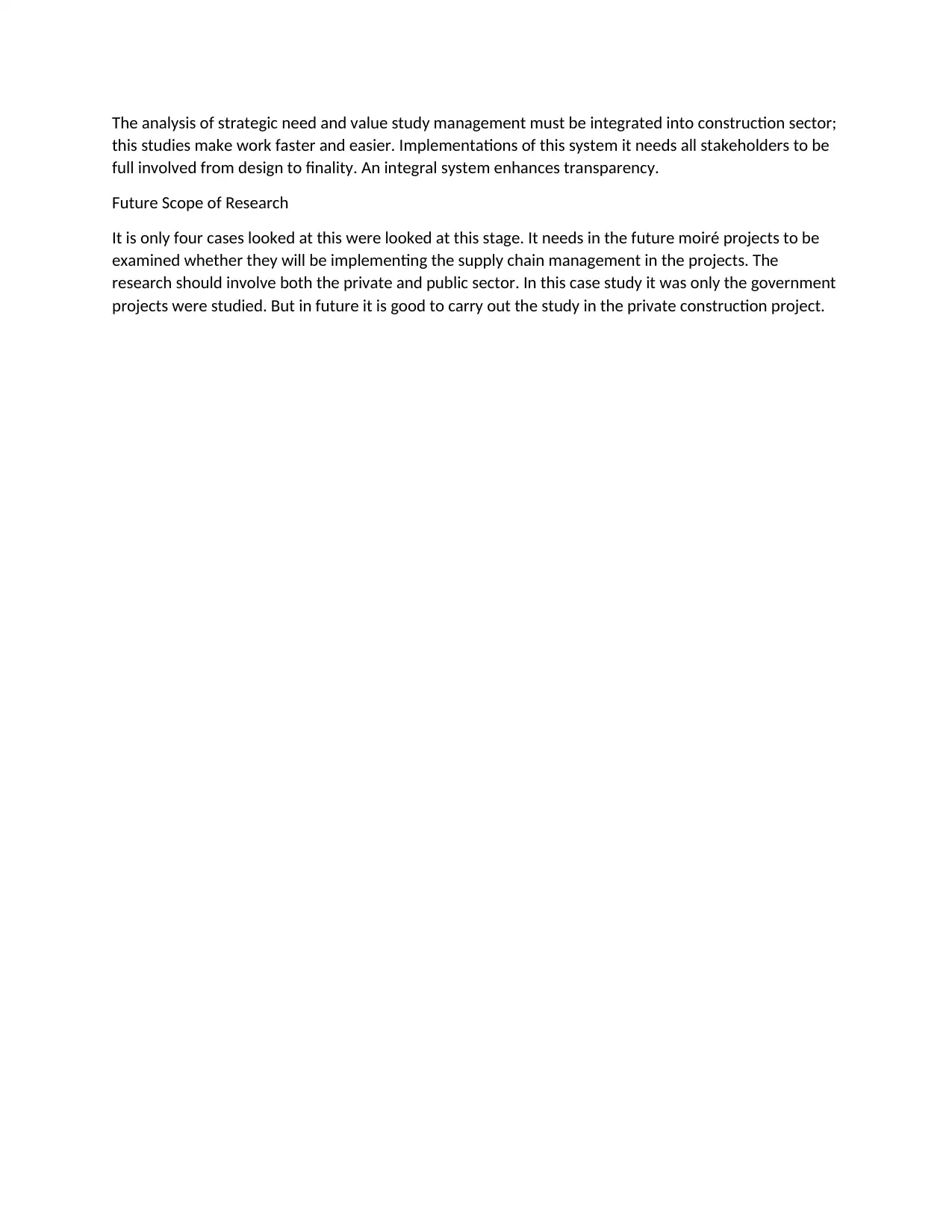






![[object Object]](/_next/static/media/star-bottom.7253800d.svg)